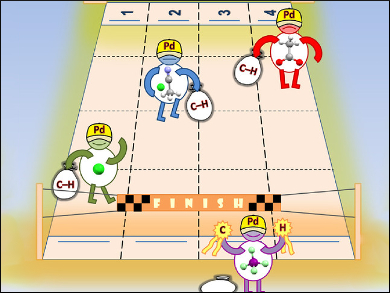The activation of C–H bonds is the key step in many reactions catalyzed by transition metals. These reactions are usually performed in solution, often using palladium catalysts, and the reported synthetic procedures are frequently accompanied by mechanistic studies. In contrast, insight into C–H bond activations performed in the solid state using mechanochemical methods, such as ball milling, is still in its early stages.
Marina Juribašić Kulcsár, Manda Ćurić, Ruđer Bošković Institute, Zagreb, Croatia, and colleagues have performed a comparative mechanistic study of the mechanochemical C–H bond activation in an unsymmetrical azobenzene by common Pd(II) catalysts, used with liquid and/or solid additives. In-situ Raman monitoring of these reactions, in combination with stepwise ex-situ nuclear magnetic resonance (NMR) spectroscopy, infrared (IR) spectroscopy, and powder X-ray diffraction experiments were used to probe the reaction mechanism and kinetics.
The results revealed how liquid or solid additives modify precursors or intermediates and their reactivity. The C–H bond activation was achieved by all tested Pd(II) catalyst precursors and their reactivity increases in the order [Pd(OAc)2]3 < PdCl2(MeCN)2 < PdCl2 < [Pd(MeCN)4][BF4]2.
According to the researchers, the obtained mechanistic insight into the solid-state C–H bond activation with different Pd(II) catalysts can provide a better understanding of the effects of the metal catalyst, as well as liquid and solid additives in future functionalization studies using ball milling. This could stimulate the wider application of this type of solid-state reaction for the synthesis of various compounds, especially those that are not readily available from solution.
- Mechanism of Mechanochemical C–H Bond Activation in an Azobenzene Substrate by PdII Catalysts,
Alen Bjelopetrović, Stipe Lukin, Ivan Halasz, Krunoslav Užarević, Ivica Đilović, Dajana Barišić, Ana Budimir, Marina Juribašić Kulcsár, Manda Ćurić,
Chem. Eur. J. 2018, 24, 10672–10682.
https://doi.org/10.1002/chem.201802403




